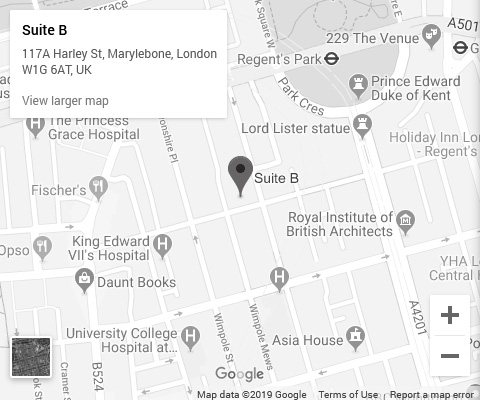
Introduction
Uterine fibroids are common, non-cancerous growths in the uterus that usually develop during reproductive years. Also known as myomas, they vary widely in size and number. Some are microscopic, while others can grow as large as a grapefruit or more, potentially distorting the uterus and even filling the pelvis or abdomen. Despite their size, fibroids almost never turn into cancer and are not usually linked to a higher risk of uterine cancer.
Many people with fibroids do not experience symptoms, so they may be discovered incidentally during a pelvic exam or ultrasound. However, when symptoms occur, they can include heavy menstrual bleeding, back pain, frequent urination, and pain during intercourse. Small fibroids do not often require treatment, but larger ones need to be managed with medications or surgery. While fibroids are common, they do not affect everyone the same way, and treatment depends on their size, location, and associated symptoms.
Read on this blog further to find out more detailed insights on uterine fibroids.
What are uterine fibroids?
Uterine fibroids, also known as leiomyomas or myomas, are non-cancerous tumours made of muscle and tissue that form in or on the uterus. They are the most common benign tumours in women. While their exact cause is unknown, fibroids vary widely in size, shape, and location. They may develop within the uterine wall, on its surface, or attach by a stalk-like structure. Some are microscopic, while others grow large enough to alter the size and shape of the uterus.
Symptoms of fibroids can include heavy menstrual bleeding, irregular periods, and abdominal or pelvic pain; though many individuals experience no symptoms and may even be unaware that they have fibroids. These growths rarely turn cancerous and neither do they increase the risk of uterine cancer.
The need for treatment depends on the severity of symptoms. In cases where fibroids cause significant discomfort or complications, options include medication or surgical intervention. For asymptomatic cases or small fibroids, treatment may not be necessary.
Fibroids are commonly identified during routine pelvic exams or imaging studies and are known by several terms, including fibromas and uterine myomas. Despite their prevalence, their impact varies greatly among individuals.
Where do fibroids grow?
Fibroids can develop as single growths or clusters, ranging in size from 1 millimetre to over 20 centimetres. They may be as small as a seed or as large as a watermelon. These non-cancerous growths form in different parts of the uterus, such as – intramural fibroids develop within the wall of the uterus, subserosa fibroids develop on the outer surface of the uterus, and submucosal fibroids protrudes into the uterine cavity. Their location determines how they influence the symptoms and treatment options.
Types of Uterine Fibroids
Fibroids are classified based on their location in or on the uterus:
- Intramural fibroids: They are the most common type, growing within the muscular wall of the uterus. They can expand and stretch the uterus.
- Subserosa fibroids: These develop on the outer surface of the uterus, known as the serosa, and may grow large enough to make one side of the uterus appear enlarged.
- Pedunculated fibroids: A subtype of subserosa fibroids, these grow on a slender stem or base, appearing like a stalk-supported growth.
- Submucosal fibroids: Found in the myometrium, they are the middle muscle layer of the uterus, and are less common than other types.
- Cervical fibroids: These are rare growths that form on the cervix, the lower part of the uterus connecting to the vagina.
Each type can vary in size and impact, influencing symptoms and treatment options.
Fibroids vs. Cysts
Cysts are quite similar to uterine fibroids. Ovarian cysts are non-cancerous growths occurring in the female reproductive system. Just like fibroids, these fluid-filled sacs often do not manifest much symptom. When symptoms arise, they show the same signs like those in fibroids – bloating, pelvic pain, or changes in your menstrual cycle.
Symptoms
Although smaller fibroids do not cause many symptoms; once they grow larger, they produce symptoms like:
- Menorrhagia, a condition of heavy bleeding due to periods, might lead to anaemia due to excessive blood loss
- Longer periods than usual, or periods occurring more frequently
- Pressure or pain in the pelvic region
- Frequent urge and trouble in urination
- Pain in the stomach area
- Bloating, a feeling of fullness in your abdomen or lower belly
- Pain in the lower back
- Constipation or a sensation of pressure on your rectum
- Chronic discharge from the vagina
- Difficulty in urinating; inability to empty your bladder completely
- Enlargement and swelling of your abdomen, appearing like a pregnant stomach
- Menstrual clotting
- Increased cramping during menstruation
- Leg pain
- Dyspareunia, pain during or after sexual intercourse
Besides these symptoms, you may have fibroids where you will feel nothing at all. However when it comes to larger fibroids, discomfort and pain are common signs. A persistent back pain, pain while having sex or after an intercourse, or stabbing pain in the abdomen characterise uterine fibroid pain.
If it is about their appearance, fibroids are typical round shaped growths, looking like smooth bumps. Fibroids might be attached to the uterus through a thin stalk or stem like structure, giving them a mushroom like appearance.
Causes
While the exact reason causing uterine fibroids is still not clear, a number of factors are believed to contribute to their development:
- Gene changes: Fibroids often contain genetic alterations different from normal uterine muscle cells.
- Hormones: Oestrogen and progesterone, which prepare the uterus for pregnancy by thickening its lining, appear to promote fibroid growth. Fibroids have more receptors for these hormones than regular uterine muscle cells. After menopause, fibroids often shrink due to lower hormone levels.
- Growth factors: Substances such as insulin-like growth factor, which help maintain tissues, may influence fibroid growth.
- Extracellular matrix (ECM): This material, which helps cells stick together, is high in fibroids, making them more fibrous. ECM also stores growth factors and alters cell biology.
Doctors suspect fibroids develop from a stem cell in the smooth muscle tissue of the uterus. This cell divides repeatedly, forming a distinct, firm mass. However, growth patterns vary. For instance, fibroids can grow rapidly, remain stable, or even shrink. Some experience growth spurts, while others regress naturally.
Fibroids related to pregnancy may shrink or disappear as the uterus returns to its normal size after childbirth. Understanding these factors is essential for the management and treatment of fibroids, which range from asymptomatic to symptomatic cases requiring medical intervention.
Diagnosis
Uterine fibroids are often discovered incidentally during a routine pelvic exam. Your doctor may detect irregularities in the shape of your uterus, suggesting the presence of fibroids. If you have symptoms, specific tests can confirm the diagnosis and provide more details:
- Ultrasound: This imaging test uses sound waves to create pictures of your uterus, helping to confirm the presence of fibroids and detect their size and location. There are two types of ultrasounds for this purpose:
- Transabdominal ultrasound where the transducer is moved over your abdomen to capture images.
- Transvaginal ultrasound where the transducer is inserted into the vagina for a closer view of the uterus.
- Lab Tests: If you experience irregular menstrual bleeding, blood tests may be recommended to identify possible causes. These may include:
- Complete Blood Count (CBC): Checks for anaemia caused by prolonged blood loss.
- Other Blood Tests: Evaluate for bleeding disorders or thyroid problems that could contribute to abnormal bleeding.
These diagnostic tools help determine the presence and impact of fibroids, guiding decisions about appropriate management or treatment, especially if symptoms like heavy bleeding or pain are affecting your quality of life.
Other Imaging Tests
When an ultrasound does not provide enough information, additional imaging tests may be needed to evaluate uterine fibroids and guide treatment options:
- Magnetic Resonance Imaging (MRI): This imaging method offers detailed insights into fibroid size, location, and type, guiding on treatment decisions. It is often recommended for individuals with a larger uterus or those approaching menopause.
- Hysterosonography: This procedure uses sterile saline to expand the uterine cavity, enhancing the visualisation of submucosal fibroids and the uterine lining. The other name of this procedure is saline infusion sonogram, which is particularly useful for individuals with heavy menstrual bleeding or those trying to conceive.
- Hysterosalpingography: This X-ray procedure uses a dye to highlight the uterine cavity and fallopian tubes. It is helpful in assessing infertility, revealing whether the fallopian tubes are open or blocked, and identifying submucosal fibroids.
- Hysteroscopy: During this procedure, a small, lighted telescope, called hysteroscope, is inserted through the cervix into the uterus. Saline is used to expand the uterine cavity, allowing the doctor to examine the uterine walls and the openings of the fallopian tubes in detail.
These tests offer more precise imaging and diagnostic capabilities, especially for individuals with complex symptoms or fertility concerns. They help tailor treatment plans to address specific needs effectively.
Fibroids Treatment
There is no single best treatment for uterine fibroids, as options vary based on symptoms, fibroid size, and individual preferences. If you experience symptoms, consult your healthcare provider to explore treatment options. Common approaches include medication and hormonal therapies to manage symptoms and shrink fibroids.
Medications
- Gonadotropin Releasing Hormone (GnRH) Agonists
GnRH agonists work by suppressing the production of oestrogen and progesterone, inducing a temporary menopause-like state. This halts menstrual periods, shrinks fibroids, and can improve anaemia.
Symptoms typically return after discontinuation, and long term use may lead to bone loss. Treatment duration is often limited to 6 months unless combined with low-dose oestrogen or progestin, which extends use to up to 12 months and minimises side effects like hot flashes.
- Gonadotropin Releasing Hormone (GnRH) Antagonists
These medications manage heavy menstrual bleeding without shrinking fibroids. These can take up to 2 years and often include add-back therapy to reduce hot flashes and bone loss. They are suitable for individuals with heavy bleeding who have not reached menopause. - Progestin Releasing Intrauterine Device (IUD)
A progestin-releasing IUD alleviates heavy bleeding associated with fibroids. While it does not shrink fibroids or eliminate them, it can effectively manage symptoms and also serve as a contraceptive method. - Other Medications
- Low dose birth control pills help control menstrual bleeding but do not shrink fibroids.
- Non-steroidal anti-inflammatory drugs (NSAIDs) relieve fibroid-related pain but do not affect bleeding.
- Vitamins and iron supplements are often recommended for those with heavy bleeding and anaemia to restore iron levels.
Each treatment has its benefits and limitations. For instance, GnRH agonists and antagonists are effective but have a restricted duration of use due to side effects like bone loss, while progestin-releasing IUDs manage symptoms without addressing fibroid size. Discussing these options with your healthcare provider is essential to choose the most appropriate treatment based on your symptoms and overall health.
Non-invasive Procedure
-
Focused Ultrasound Surgery
Focused ultrasound surgery (FUS) is a non-invasive treatment for uterine fibroids that does not require surgical incisions or the insertion of tools into the body. This outpatient procedure preserves the uterus, allowing patients to return home the same day.
During FUS, you lie inside an MRI scanner equipped with a high-energy ultrasound device. The MRI images help your doctor find out the exact location of the fibroids. Once the fibroids are targeted, the ultrasound device emits focused sound waves that heat and destroy small areas of fibroid tissue.
FUS is an innovative technology, and researchers are still working on its long-term safety and effectiveness. Current data suggest that it is both safe and effective for treating uterine fibroids. However, the procedure might not alleviate symptoms as much as uterine artery embolisation, a slightly more invasive technique. As a non-invasive option, FUS offers a promising treatment for women seeking to preserve their uterus while addressing fibroid-related symptoms.
Minimally Invasive Procedures
Minimally invasive treatments for uterine fibroids offer faster recovery times and fewer complications compared to traditional open surgeries. These procedures involve from small to no cuts and include the following options:
-
Uterine Artery Embolisation (UAE)
This technique involves injecting small particles, known as embolic agents, into the arteries that supply blood to the uterus. By blocking the blood flow to fibroids, the procedure causes them to shrink and die. UAE effectively reduces fibroid size and alleviates symptoms. Complications might arise if blood flow to the ovaries or nearby organs is interrupted. However, studies show that these risks are common in case of surgical treatments as well. Moreover, UAE has a lower likelihood of requiring a blood transfusion.
-
Radiofrequency Ablation
Radiofrequency ablation destroys uterine fibroids by using heat from radiofrequency energy, causing the blood vessels supplying the fibroid to shrink. It can be performed in several ways:
- Laparoscopic Radiofrequency Ablation (Lap-RFA)
This method involves two small cuts in the abdomen through which a laparoscope (a thin tube with a camera) and an ultrasound tool are inserted. These tools help the doctor locate the fibroids. A device then sends small needles into the fibroids, heating and destroying the tissue. The destroyed fibroid tissue softens immediately and continues to shrink over the next 3 to 12 months, improving symptoms.
Also known as the Acessa procedure, Lap-RFA is considered less invasive than surgeries like hysterectomy or myomectomy as it does not require cutting uterine tissue. Recovery is typically quick, with most individuals resuming regular activities within a few days.
- Transcervical Radiofrequency Ablation (Sonata)
This approach accesses fibroids through the cervix and uses ultrasound guidance to locate and treat them without abdominal incisions.
-
Laparoscopic or Robotic Myomectomy
In a myomectomy, fibroids are surgically removed while preserving the uterus. If fibroids are few in number, a laparoscopic approach may be used. This involves small cuts in the abdomen through which slender instruments are inserted to remove the fibroids.
For more precision, a robotic system may assist the laparoscopic procedure. The surgeon uses a small camera to get 3D, magnified view of the uterus. Robotic myomectomy is especially beneficial for intricate cases requiring detailed movements.
Large fibroids can be removed through smaller incisions by breaking them into pieces, a process called morcellation. Morcellation may be performed inside a surgical bag to minimise the risk of spreading undetected cancer cells. Alternatively, fibroids can be removed by enlarging one incision, eliminating the need for morcellation.
-
Hysteroscopic Myomectomy
This option is suitable for submucosal fibroids located inside the uterus. The procedure uses instruments inserted through the vagina and cervix to access and remove the fibroids without abdominal incisions.
-
Endometrial Ablation
Endometrial ablation targets the uterine lining to reduce heavy menstrual bleeding. The procedure involves inserting a device into the uterus that emits heat, microwave energy, hot water, cold temperatures, or an electric current to destroy the endometrial tissue.
Pregnancy is unlikely to happen after endometrial ablation. Birth control initiative is also recommended to prevent ectopic pregnancies, where a fertilised egg implants outside the uterus, which can cause life-threatening complications.
While minimally invasive procedures preserve the uterus, there is a risk of new fibroid growth, potentially causing recurrent symptoms.
Traditional Surgeries for Fibroids
Traditional open surgeries involving larger incisions for fibroid treatment include abdominal myomectomy and hysterectomy.
- Abdominal Myomectomy: This procedure involves removing fibroids through a large incision in the abdominal area. It is often recommended for individuals with multiple, large, or deeply embedded fibroids. For many, an abdominal myomectomy offers an alternative to hysterectomy, preserving the uterus. However, scarring from the surgery may lead to reduced future fertility.
- Hysterectomy: This surgery removes the uterus and is the only proven permanent treatment for uterine fibroids. Hysterectomy eliminates the ability to bear children. If the ovaries are also removed, the procedure induces menopause, which may require hormone replacement therapy to alleviate symptoms like hot flashes. Many individuals undergoing a hysterectomy can opt to retain their ovaries, avoiding immediate menopause.
These surgical options are tailored to individual needs and circumstances, considering factors such as the size and location of fibroids, the desire for future fertility, and overall health. Consult your healthcare provider to discuss the risks, benefits, and alternatives to determine the best approach for your situation.
Risk Factors
Several factors may increase the risk of developing uterine fibroids. These include obesity, a higher body mass index (BMI), and a family history of fibroids. Early menstruation (before the age of 10 years), late menopause, and not having children are also linked to higher risk. Lifestyle and dietary habits, such as low vitamin D levels, consuming excessive red meat, insufficient intake of green vegetables, fruits, and excessive consumption of dairy products, and alcohol use, may contribute as well.
Race plays a significant role; black individuals are more likely to develop fibroids at younger ages, experience larger or more numerous fibroids, and have more severe symptoms compared to white individuals. Additional risk factors include using birth control pills before age 16. Understanding these factors can help in identifying and managing the risk of fibroids effectively.
What size of uterine fibroids requires surgical removal?
The size of uterine fibroids alone does not determine the need for surgical removal. Instead, the decision depends on symptoms and their impact on your health. Even small fibroids, such as those the size of a marble, may require attention if they cause significant issues like heavy bleeding, depending on their location. Your healthcare provider will evaluate factors such as pain, bleeding, or other complications to decide if surgery is necessary. It is important to discuss your symptoms and treatment options with your healthcare specialist to determine the best course of action for your condition.
Complications
Uterine fibroids are usually not dangerous but can lead to complications such as pain, heavy bleeding, abdominal or pelvic swelling, anaemia which may cause fatigue, and, in rare cases, infertility. If you experience heavy periods, your doctor may recommend iron supplements to manage anaemia, and in some cases, a blood transfusion might be necessary due to significant blood loss.
Morcellation during fibroid removal
Morcellation is a technique used to break fibroids into smaller pieces during a myomectomy. However, it can increase the risk of spreading undetected cancer if a fibroid contains a hidden tumour. The risk can be minimised by assessing a person’s risk factors before surgery, using a surgical bag to contain the fibroid during morcellation, or opting for a larger incision to remove the fibroid without breaking it up.
All myomectomies carry the potential risk of inadvertently cutting into undiagnosed cancer, but this risk is lower in individuals under 50, particularly those who have not yet reached menopause. While complications during open surgery are more common, the likelihood of spreading an unnoticed cancer during a minimally invasive procedure is relatively low. If you consider morcellation, it is important to discuss the risks with your doctor beforehand to make an informed decision about treatment.
What size of fibroid is dangerous for your uterus?
Small fibroids usually do not require treatment since they do not cause symptoms. Larger fibroids, however, can lead to severe pain and heavy bleeding, requiring treatment based on their size, location, and number. Most fibroids range from 2 to 6 centimetres, but those larger than this can cause more significant issues, like heavy bleeding. In such cases, treatment may be necessary, and removal can become more challenging for your doctor due to the size and location of the fibroids.
Prevention
Researchers are still exploring the causes of uterine fibroids, and more studies are needed to understand how to prevent them. While complete prevention may not be possible, only a small percentage of fibroids require treatment. You can potentially reduce your risk by maintaining a healthy weight, exercising regularly, and eating a balanced diet rich in fruits and vegetables. Lifestyle choices can play a significant role in managing fibroid risk.
Fibroids and Pregnancy
Pregnancy can cause fibroids to grow rapidly due to increased oestrogen and progesterone levels. While fibroids often do not interfere with getting pregnant, certain types, like submucosal fibroids, can lead to infertility or pregnancy loss. If fibroids are present during pregnancy, they may increase the risk of complications such as placental abruption, preterm delivery, and foetal growth restriction. Large fibroids can also lead to delivery complications, including the need for a C-section and difficulty in labour progression.
For those wishing to preserve fertility, myomectomy, a surgery to remove fibroids, is often the treatment of choice. However, procedures like hysterectomy, endometrial ablation, uterine artery embolisation, and radiofrequency ablation may not be suitable for those who want to maintain the ability to conceive in the future. It’s important to consult with a healthcare provider about the risks and benefits of different treatments if fertility preservation is a concern.
If you are trying to get pregnant and have fibroids, a complete fertility evaluation is advised before deciding on the treatment. During pregnancy, fibroids require careful monitoring to manage any potential complications.
Fibroids after Menopause
After menopause, decreased hormone levels often cause uterine fibroids to shrink, and symptoms may improve. It is rare for fibroids to grow after menopause, but if you experience concerning symptoms, it is important to consult your doctor, as they could indicate a different health issue.
Are fibroids cancerous?
Fibroids rarely become cancerous, with only about 1 in 350 people with fibroids developing cancer. There is no test that can fully predict the rare occurrence of fibroid-related cancers. However, if fibroids grow rapidly or continue to grow after menopause, it is important to seek immediate medical help. While malignant fibroids are extremely uncommon, monitoring unusual changes or growth patterns can help detect potential issues early. Regular check-ups and attention to any significant changes in symptoms are important for managing fibroids and addressing any concerns promptly.
Can fibroid lead to anaemia?
Anaemia occurs when the body lacks enough healthy red blood cells to deliver oxygen to organs. People with heavy or frequent periods, often caused by fibroids, are at risk for anaemia. Fibroids can lead to excessively heavy periods or bleeding between periods. If you are experiencing symptoms of anaemia, such as fatigue, while dealing with fibroids, it is important to consult your healthcare provider for guidance and management.
Risks of New Fibroids
Except for hysterectomy, many fibroid treatments carry the risk of recurrence. This means that tiny tumours, or seedlings, may not be detected during surgery but could grow later and cause symptoms requiring additional treatment. New fibroids may also develop, potentially requiring further intervention. Some procedures, such as laparoscopic or robotic myomectomy, radiofrequency ablation, and MRI-guided focused ultrasound (FUS) surgery, may only target some of the fibroids present at the time of treatment, leaving others untreated. As a result, patients may face the possibility of future fibroid growth or recurrence.
When to see a doctor?
If you experience pelvic pain that persists, heavy or painful periods that affect daily activities, spotting or bleeding between periods, difficulty emptying your bladder, or ongoing fatigue and weakness which are potential signs of anaemia, it is important to see your doctor. Seek immediate medical attention if you have severe vaginal bleeding or sudden sharp pelvic pain. Early detection and treatment can help manage these symptoms effectively.
Summary
In short, uterine fibroids are common, non-cancerous growths in the uterus that affect many women. While they are often asymptomatic, they can cause heavy bleeding, pain, and other discomforts in many cases. Treatment options range from medication and minimally invasive procedures like uterine artery embolisation and radiofrequency ablation to more invasive surgeries like myomectomy and hysterectomy.
The decision on the best course of action for your fibroid treatment depends on various factors, including the size, location, and number of fibroids, the severity of symptoms, and individual preferences. It is crucial to consult with a healthcare provider to discuss your symptoms and explore the available treatment options. Early diagnosis and appropriate management can effectively alleviate symptoms, improve quality of life, and address potential complications associated with uterine fibroids.






-in-the-UK.jpg)

